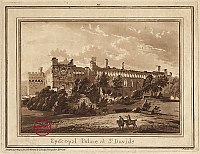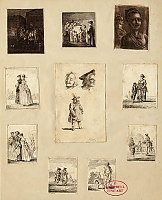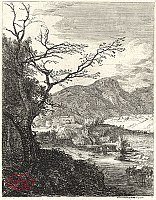 |
|
Paul Sandby1731 – 1809 |
|
|
Click on a picture for more details |
|
|
Paul Sandby is widely accredited as being the artist who introduced the ‘picturesque’ to English landscape art and he was also one of the earliest exponents of original etching in this country. Paul Sandby's first etchings date from the time when he was working as the chief draughtsman of the Ordnance Survey of Scotland (1747-1752). Upon his return to London in the spring of 1752, Sandby severed his ties with the Board of Ordnance and began to establish himself as a professional artist. Paul Sandby’s original etchings represent some of his finest work in the first decade after his return to London. Paul Sandby’s magnificent work in aquatint is considered to be one of the major turning points in the history of printmaking. Aquatint was a novel etching process which was designed to introduce tonal values to the printed image. The popularity of this printmaking technique rivalled that of mezzotint until both were gradually displaced by lithography during the nineteenth century. The importance of Paul Sandby’s innovative and pioneering work in this medium cannot be overstated. Although Sandby neither invented the original process of aquatint, nor was the first to use it in this country, he established the technique as a means of reproduing topographical watercolours and gave the process the name by which it is known. ‘Aquatinta’, as he first called it, is derived from the words ‘Aqua’, meaning water, and ‘Tinctus’, meaning stained. Paul Sandby refined the original process by introducing the concept of laying the aquatint ground through floating it on to the plate in a suspension in alcohol. His design could then be ‘painted’ on to the prepared plate using a water based substance which would cause the protective varnish to lift, thus, exposing the grounded plate to the effect of the acid bath. This method allowed him to produce the finest of grounds and gave him a freedom of handling through which the subtlest gradations of tone and the effects of watercolour washes could be obtained. [more] |







![[Coastal scene – A horseman and shepherd conversing] [Coastal scene – A horseman and shepherd conversing]](https://www.campbell-fine-art.com/u/pp/sandby.coastalscene_thm.jpg)
![[Landscape with a group of travellers] [Landscape with a group of travellers]](https://www.campbell-fine-art.com/u/pp/sandby.landscapewithgroupoftravellers_thm.jpg)

